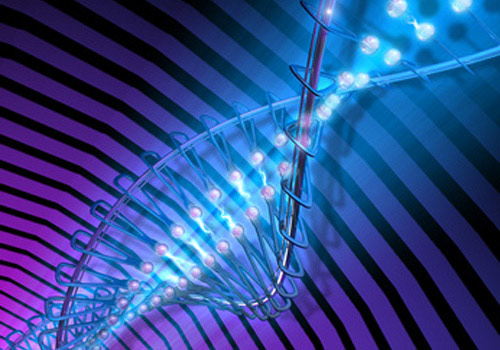
VP of product at Evonetix
Synthetic biology needs DNA sequences and as these applications advance, the required sequences are getting longer, putting current synthesis technologies to the test. Today, the process of making long accurate DNA involves an initial step of making shorter oligos, which are then stitched together using traditional techniques of annealing, restriction digestion, ligation, and amplification, often through multiple repeated steps, to achieve the required long sequence, according to Mike Daniels, PhD, VP of product, Evonetix.
After this sequence has been assembled, an error removal process, usually involving mismatch repair nucleases, is used to remove errors in the sequence. Although effective, it does not remove all mutations. The multiple steps of synthesis, sequence assembly, and error correction are time-consuming and expensive, particularly as sequences become longer, requiring days or even weeks before a usable sequence is ready. (A review by Hughes and Ellington provides a helpful broad overview of the techniques and technologies of DNA synthesis and assembly.1)
Yield and quality decline with size
Current approaches to DNA synthesis can only prepare relatively short oligonucleotides since the yield and quality decline rapidly for lengths over about 150 nucleotides. The synthesis itself is error-prone, introducing a mistake roughly once in every 200 nucleotides, explains Daniels, with some sequences, such as GC-rich regions, having an even higher error rate.
Using these sequences as the starting material to assemble long, gene-length sequences is clearly less than ideal and causes complexity in the assembly process. In addition, error removal requires further time and effort before the DNA is ready to use. “The time, effort, and cost involved simply increase as the sequence gets longer,” says Daniels.
To tackle one challenge, scientists are investigating how to best analyze errors. In a 2017 Nucleic Acids Research publication, Lubock and colleagues describe an experimental and computational, fast, scalable, and extensible pipeline to analyze errors in gene assemblies, profile error-correction methods, and benchmark DNA synthesis methods.2
New approaches
“We either need better synthesis methods that are less error-prone, and longer DNA at the start of the process, or we need better approaches to the sequence-assembly and error-removal steps to allow faster, simpler preparation of long sequences,” says Daniels.
There has been a lot of interest in using enzymatic approaches based on modified TdT enzymes. Although these have advantages in terms of the environmental conditions for the synthesis and can reduce waste, these approaches have not yet shown any significant benefit in either the length or accuracy of the initial synthesis.3
“Alternatively, improving the process of sequence assembly and error removal requires breaking away from the existing, mainly enzymatic approaches, which are unlikely to improve much beyond their current capabilities and to look at the physical properties of DNA for new ways to assemble long accurate DNA,” emphasizes Daniels.
Evonetix has developed a silicon chip that enables oligonucleotide synthesis at thousands of independently controlled synthesis sites on its surface and then uses an advanced electrophoresis process to individually release and transport these oligos from one synthesis site to the next.
The transported oligo is trapped by an electric field at the next site and anneals to the complementary oligo that has been synthesized there. Once annealed, the temperature of that site is raised to just below the melting temperature of a perfectly matched DNA duplex, causing any incorrect sequences to melt, as mismatches lower the melting temperature of the duplex. This allows the entire process of synthesis, assembly, and error removal to be completed in hours, not days or weeks of the existing technologies.
“Make sure you factor in how long it will take to get your long DNA sequences when you plan your experiments,” advises Daniels. “The reality today is that delivery can take weeks or months, especially if some sequences are hard to synthesize. I have heard too many stories of DNA that arrived too late to be used or caused major project delays.”
“This is exactly what Evonetix is working to remove as a bottleneck in synthetic biology labs,” Daniels continues, “but in the short term it will save a lot of pain to remember the limitations of the current approaches before you start your work.”
References
- Hughes RA and Ellington AD. Synthetic DNA Synthesis and Assembly: Putting the Synthetic in Synthetic Biology. Cold Spring Harb Perspect Biol. 2017. 9(1):a023812.
- Lubock NB, Zhang D, Sidore AM, Church GM and Kosuri S. A Systematic Comparison of Error Correction Enzymes by Next-Generation Sequencing. Nucleic Acids Research. 2017. 45(15): 9206–9217.
- Eisenstein, M. Enzymatic DNA synthesis enters new phase. Nat Biotechnol. 2020. 38: 1113–1115. doi.org/10.1038/s41587-020-0695-9.



